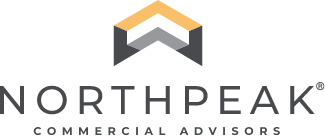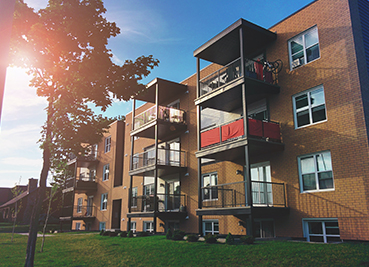
As seen in WealthManagement.com
Multifamily has maintained its status as the best performing and most resilient asset class through economic cycles.
Market conditions continue to change at a pace rarely seen before, providing significant opportunity but also uncertainty. So how do you know when to invest and what to invest in to deliver the best risk-adjusted returns? It comes down to picking the right time, the right assets and the right partner.
Major newspapers like The Wall Street Journal have run article after article on why the top industry players are lining up billions of dollars to swoop in and buy commercial real estate at deep discounts. The impact of rapidly rising interest rates on property values should present buying opportunities that we haven’t seen since the Great Financial Crisis and you don’t want to get left behind. Aligning yourself with managers who can pick the right investments will be the key to ensuring you don’t miss out on this wave of opportunity.
Picking the right time—and why that time is now
Several market factors are currently aligning to create what should be some of the most promising investment opportunities since 2009. The recent disruption in capital markets, coupled with the rapid increase in interest rates, is starting to force many property owners to either invest significant new capital or sell their assets. Owners who secured variable rate debt in recent years are grappling with interest rates that have tripled, substantial increases in reserve requirements and a steep reduction in operating cash flow. As more and more owners face looming debt maturities or loan rebalances with limited access to liquidity or ability to refinance, well-capitalized managers will be able to swoop in and acquire these assets at an attractive basis.
Many of these assets will be well-located, high quality and strong-performing, but will come to market not because of inherent underlying issues with the real estate, but rather because of the current liquidity constraints and the immediate cost implications of near-term debt. We believe this buying window will be relatively short while prices reset and investors positioned to seize on that window could achieve outsized risk-adjusted returns.
Picking the right assets: resilient and inflation-hedged
Commercial real estate remains a highly favored investment class and multifamily stands above the rest. Historically, multifamily has maintained its status as the best performing and most resilient asset class through economic cycles. One of multifamily’s key attributes is its role as an inflation hedge. Multifamily landlords have the flexibility to adjust rental rates on a weekly basis, typically with lease terms not exceeding 12 months. This adaptability becomes especially valuable as inflation rates climb, enabling multifamily property owners to consistently reset rents and align them with the prevailing economic conditions, thus offering an additional layer of protection against downside risks.
Some of the most promising multifamily investment opportunities are expected to emerge in gateway markets. These supply-constrained markets represent a flight to quality and boast strong underlying fundamentals that continue to flourish. Multifamily assets situated in supply-constrained markets, such as those found in Western U.S., are well-positioned for possible sustained rent growth. These markets, unlike some others like those in the Sunbelt region, face a lower risk of near-term oversupply, making them highly attractive prospects for investors in these volatile times.
Picking the right partner—experience matters!
In many ways, who you invest with is just as important as what you invest in. Investors need to do their diligence and pick a manager with a proven track record of success that spans multiple market cycles. While many operators had success over the past decade, it is important to separate managers who added value at the real estate level from those that just rode the wave of rising market conditions. As Warren Buffet famously said, “only when the tide goes out do you discover who’s been swimming naked.”
Successful investors will be those who can identify and avoid those skinny dippers by partnering with shops that have a proven track record of success over the past 20-plus years through recessionary periods and recovery phases.
Thorough due diligence on operators is paramount to ensure you align yourself with managers that can adapt to shifting market conditions and capitalize on rapidly emerging opportunities likely to arise in the next 12 to 18 months. Equally important is ensuring that operators’ interests align with yours. One effective way to achieve alignment is to prioritize straightforward and transparent partnership structures that offer ample downside protection. This may include arrangements such as avoiding promote crystallizations, ensuring the sponsor has sufficient co-investment in the fund and crossing waterfalls so the sponsor doesn’t make a profit until investors have earned a return on their entire investment, among other strategies.
Picking the investment structure: the value of tax benefits and transparency
Lastly, seeking investor-friendly structures can be extremely beneficial to investors. We favor closed-end funds because you can earmark capital that helps ensure the fund has sufficient dry powder to move quickly to take advantage of distressed deals and can do so at the right time. This structure allows investors to gain exposure to a diversified portfolio through a single investment with crossed waterfalls and take advantage of the tax benefits afforded real estate investments.
The tax benefits of commercial real estate are also highly attractive when compared to other investments. Through a closed-end structure, you can shield investment income and/or receive a tax loss against other capital gains using depreciation. This allows you to defer ordinary taxes during your hold and not have to repay those amounts until sale and generally they are recaptured at advantageous rates. Real estate investments have no limit on interest deductions, unlike some other investments, so you also get the full tax benefit of leverage, which is even more advantageous in a higher rate environment.
How to come out a winner
Now may be an especially favorable moment for family offices and high-net-worth investors to invest in commercial real estate and specifically multifamily. We think the opportunities over the next 12 to18 months could mirror—or even exceed—those coming out of the Great Financial Crisis, when highly successful investors were able to scoop up strong performing, well-located assets at deeply discounted prices. With several institutional investors sidelined because of their internal challenges related to allocation issues, redemption requests or a lack of liquidity in their other investment holdings, now is the time for family offices and HNW investors to capitalize on the distress.
Thoughtful investors who act now to pick managers that have the expertise to identify opportunities, apply appropriate risk-reward assessments and effectively execute their business plans to enhance value are likely to emerge as the victors in the coming years.




